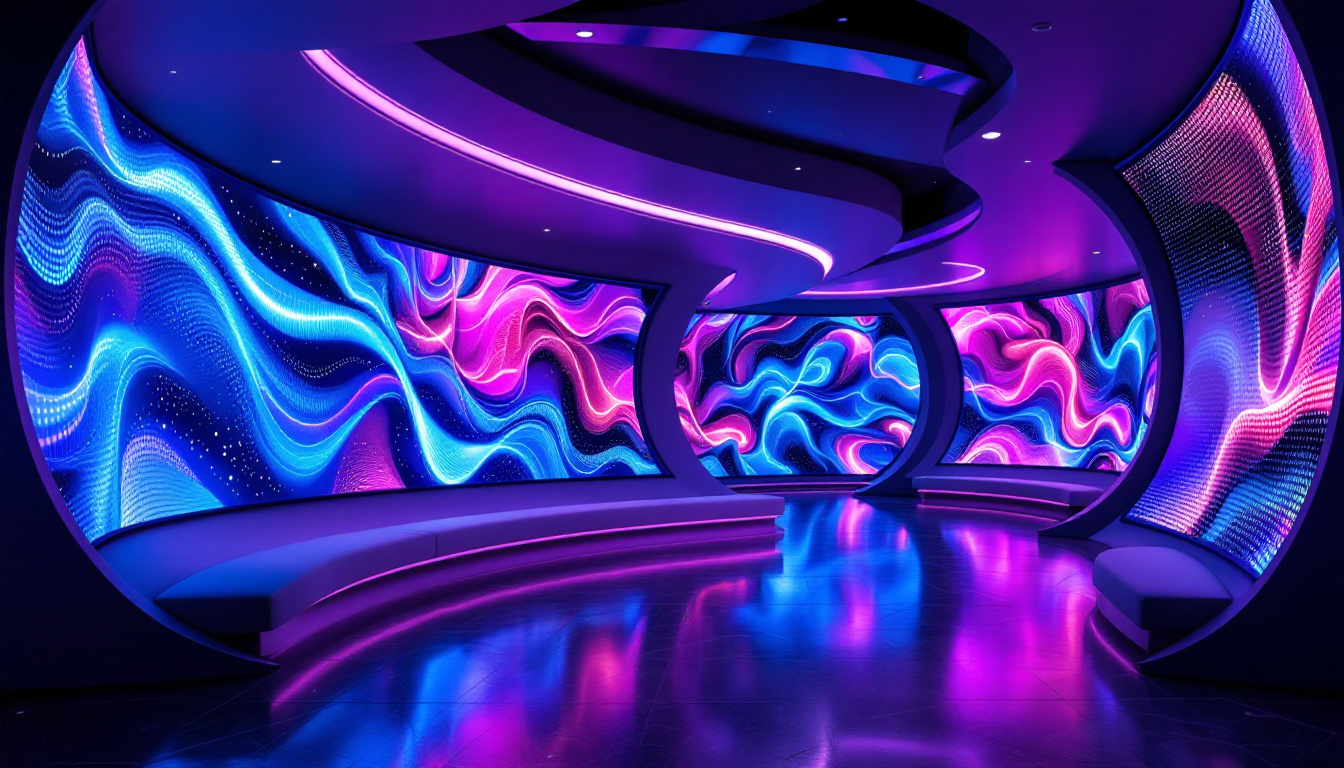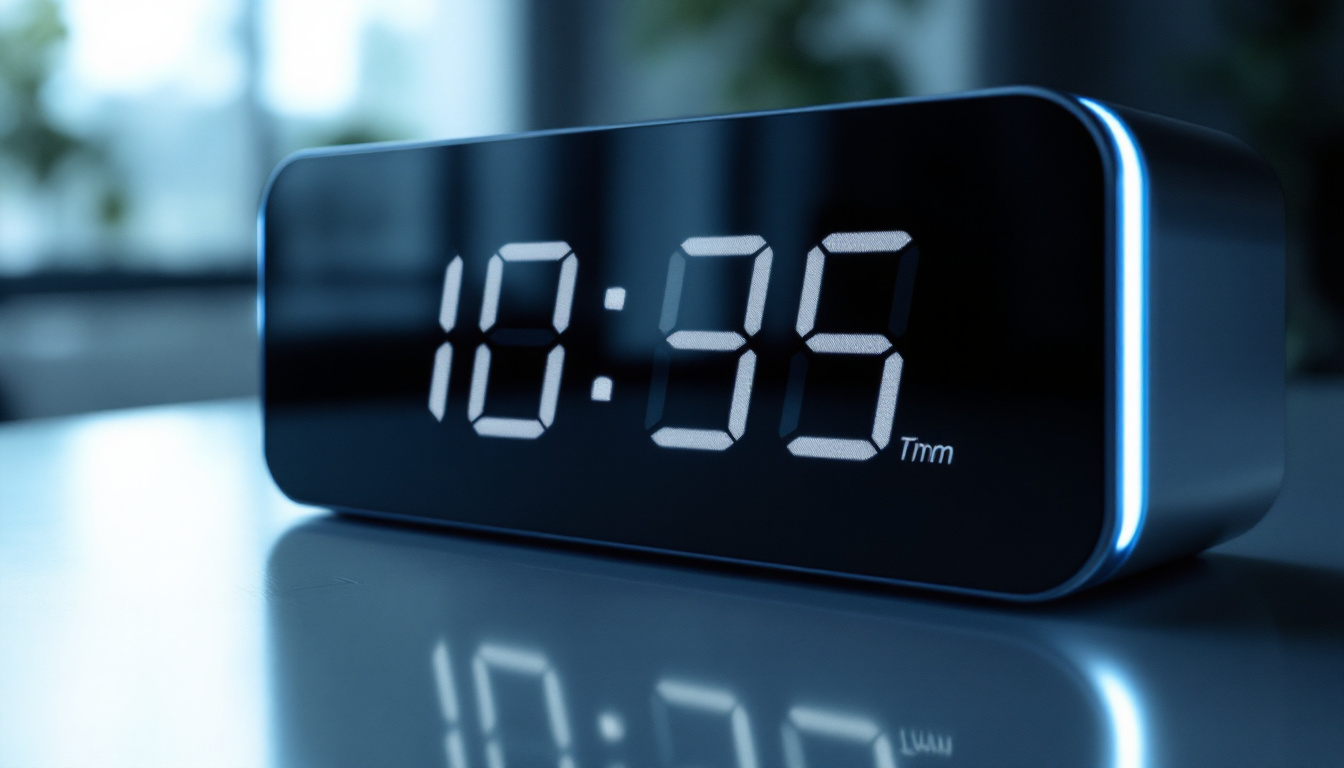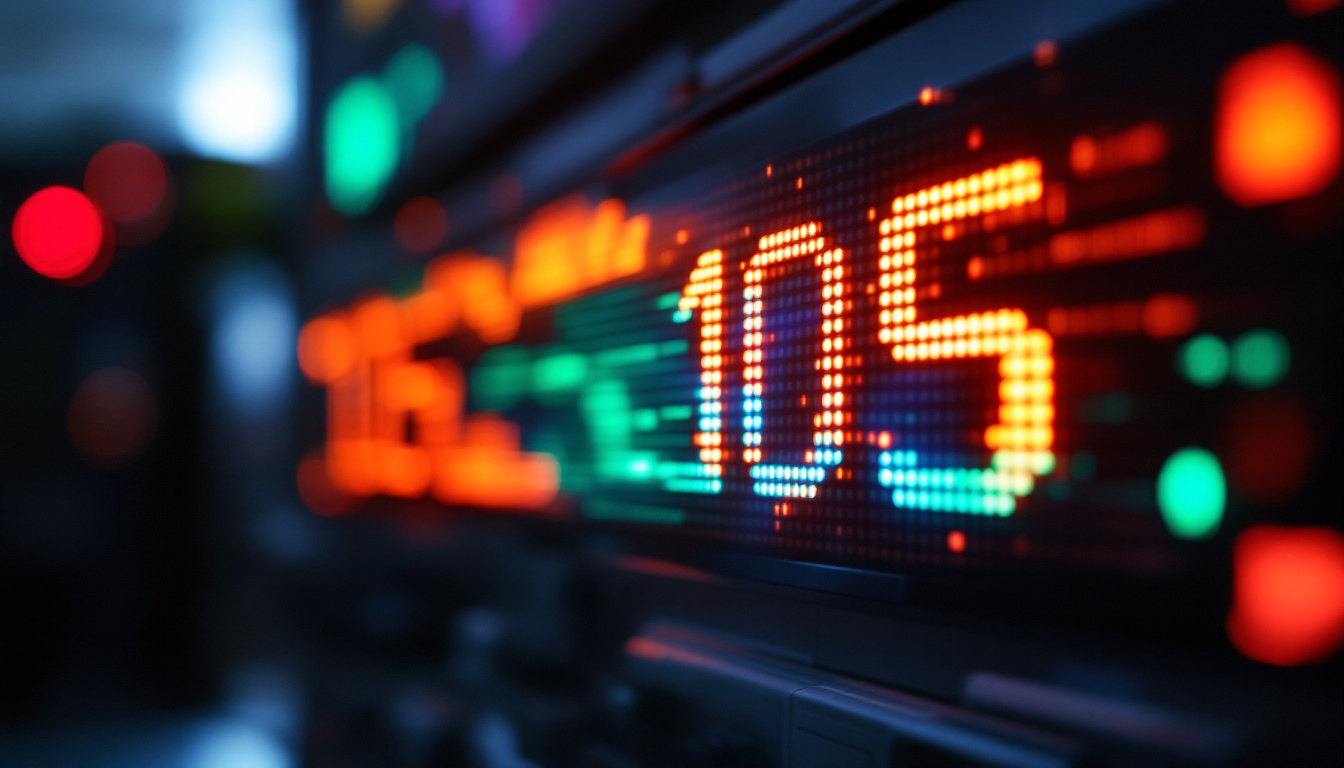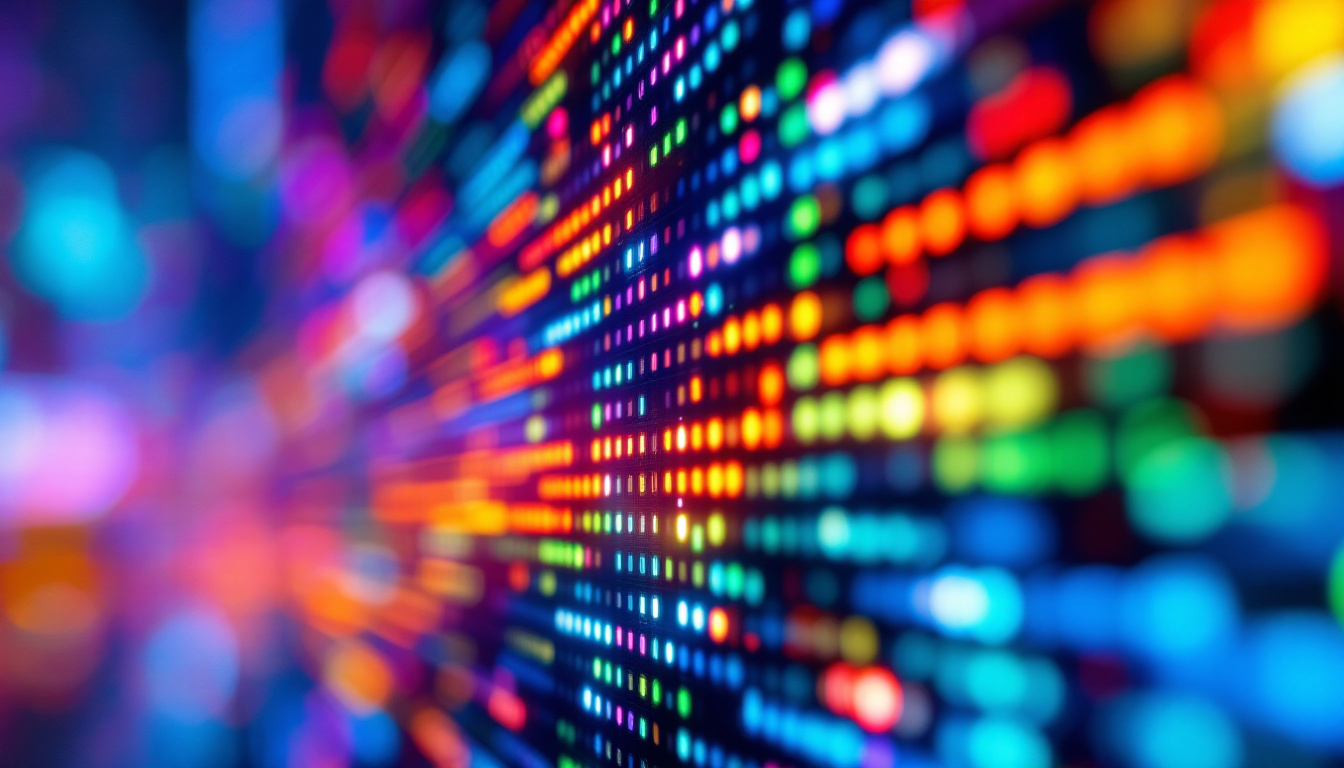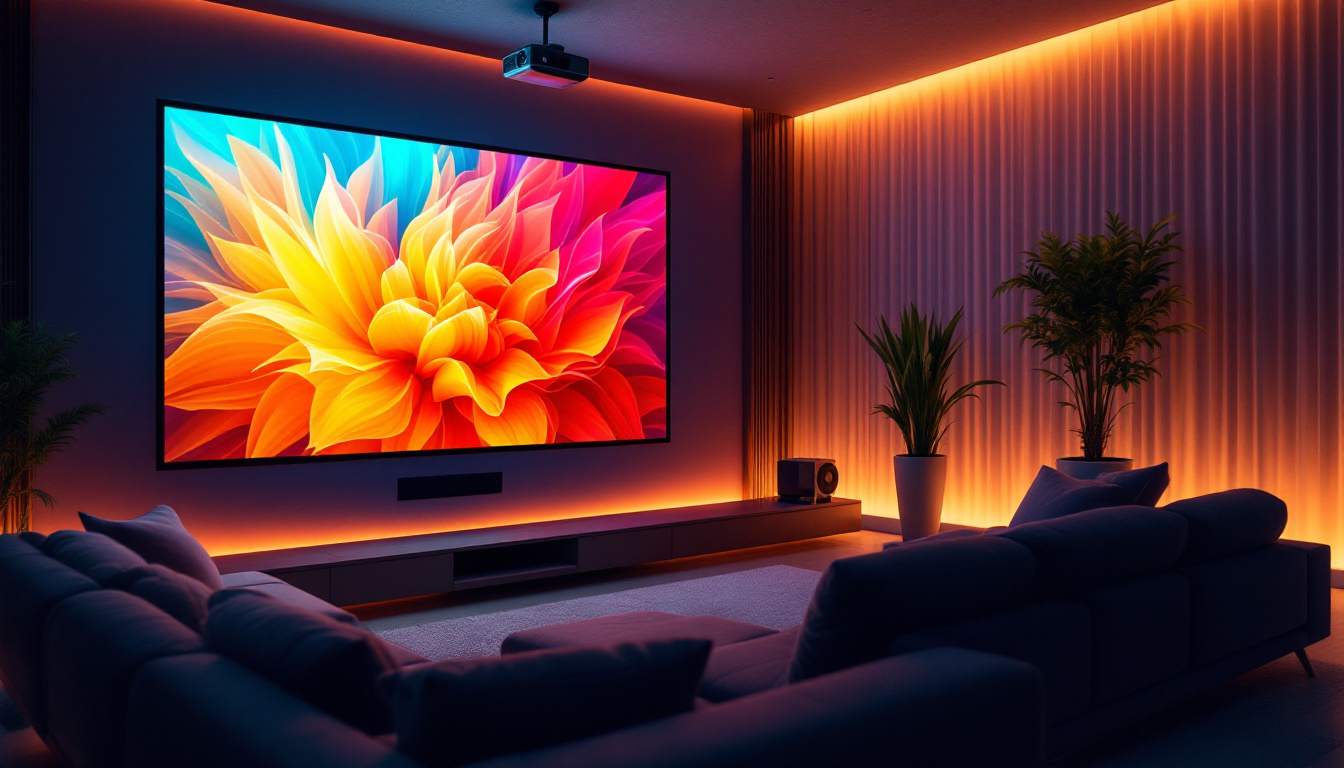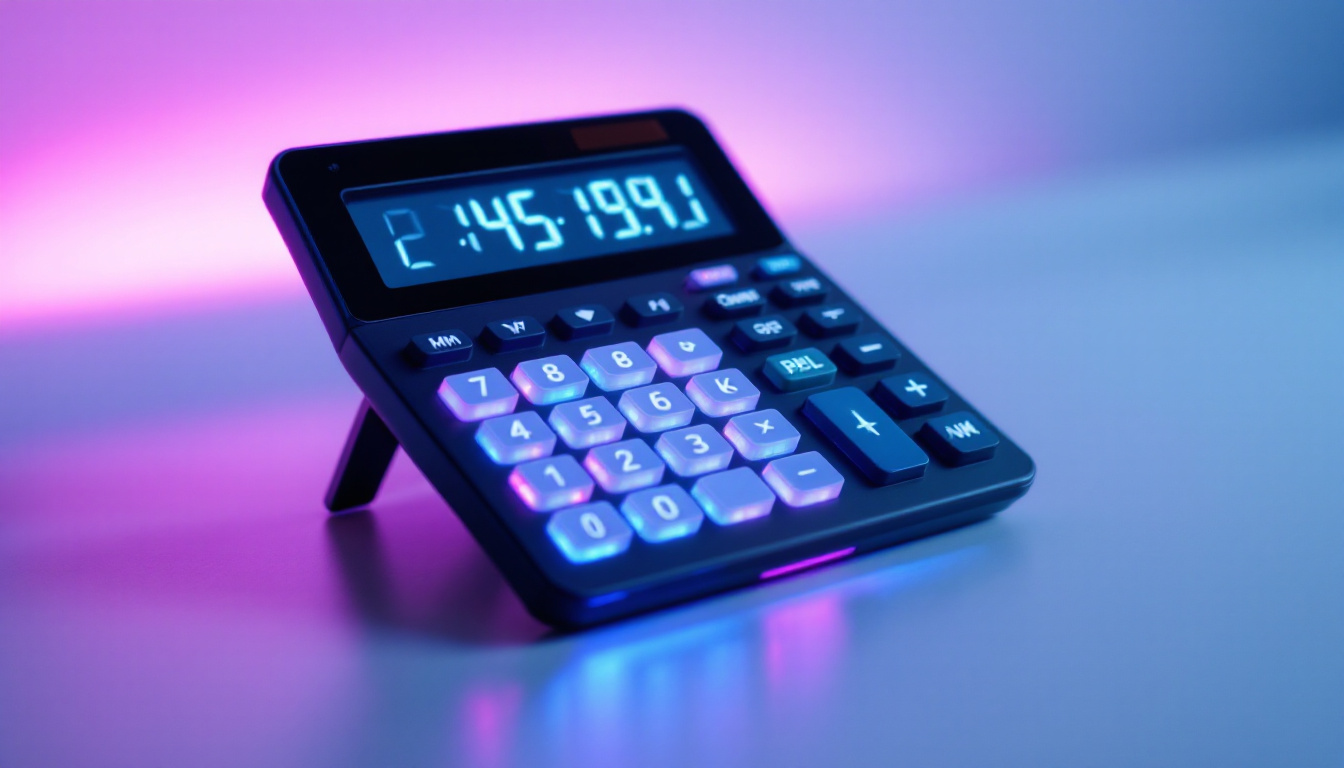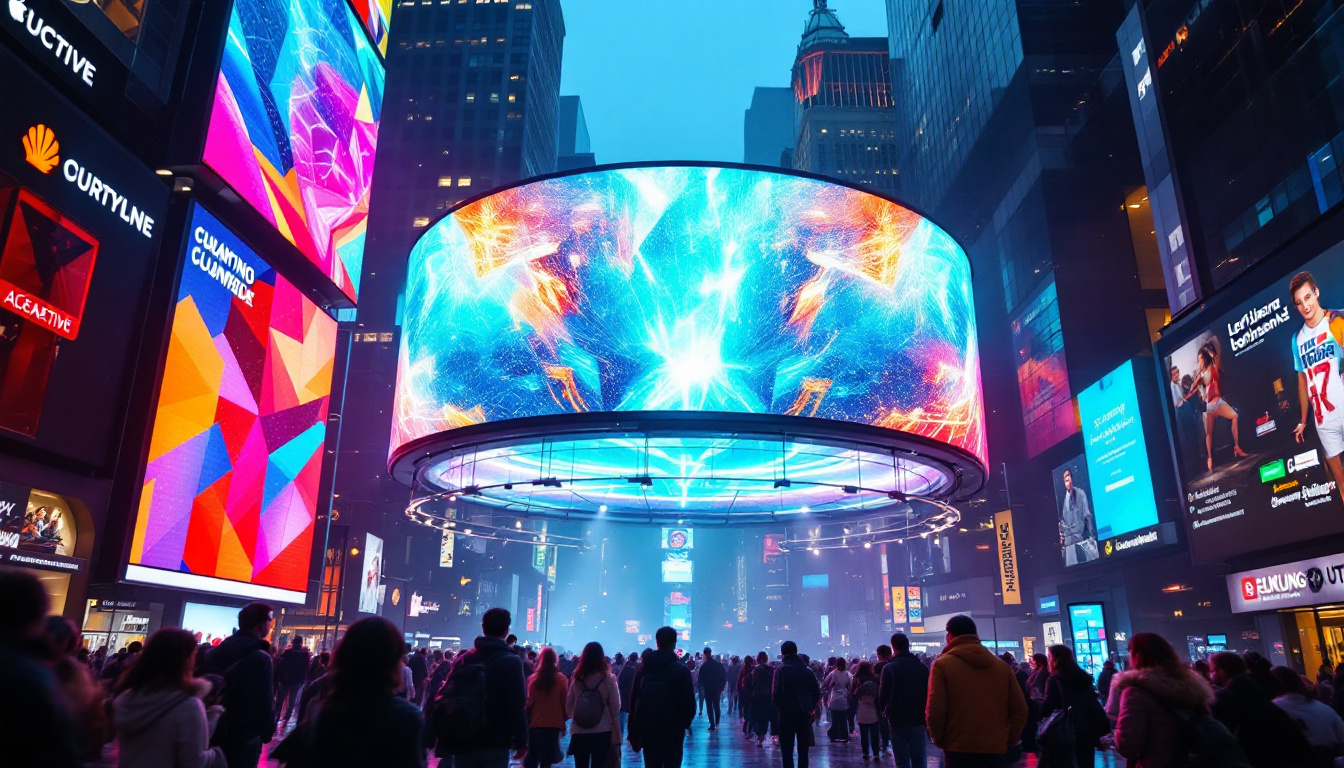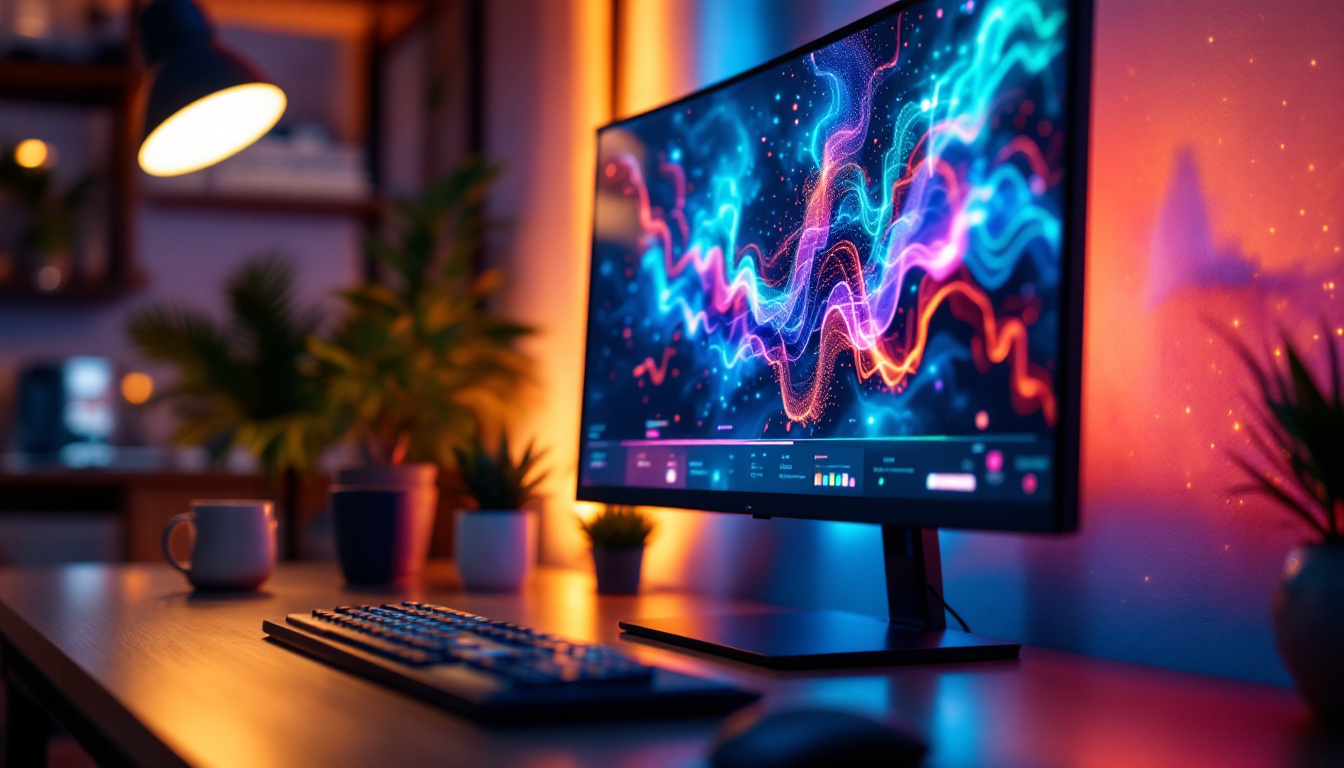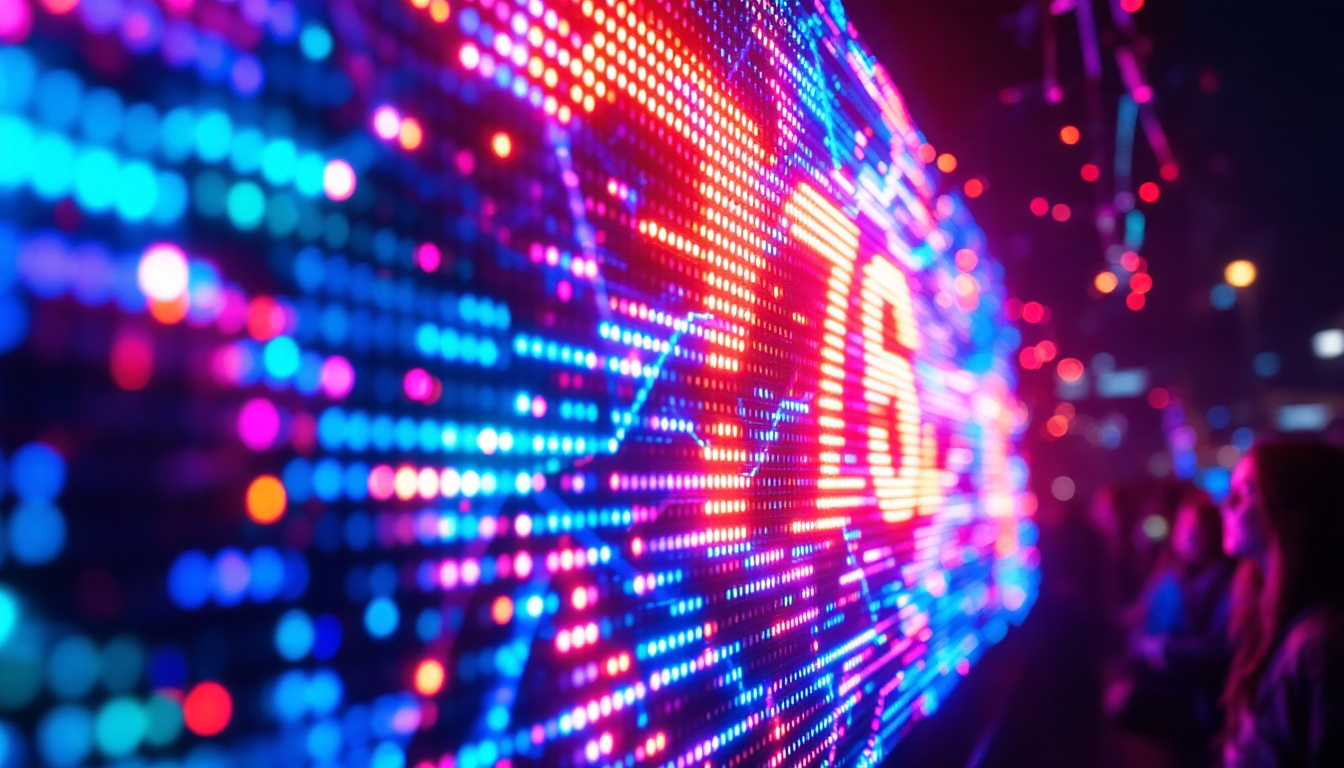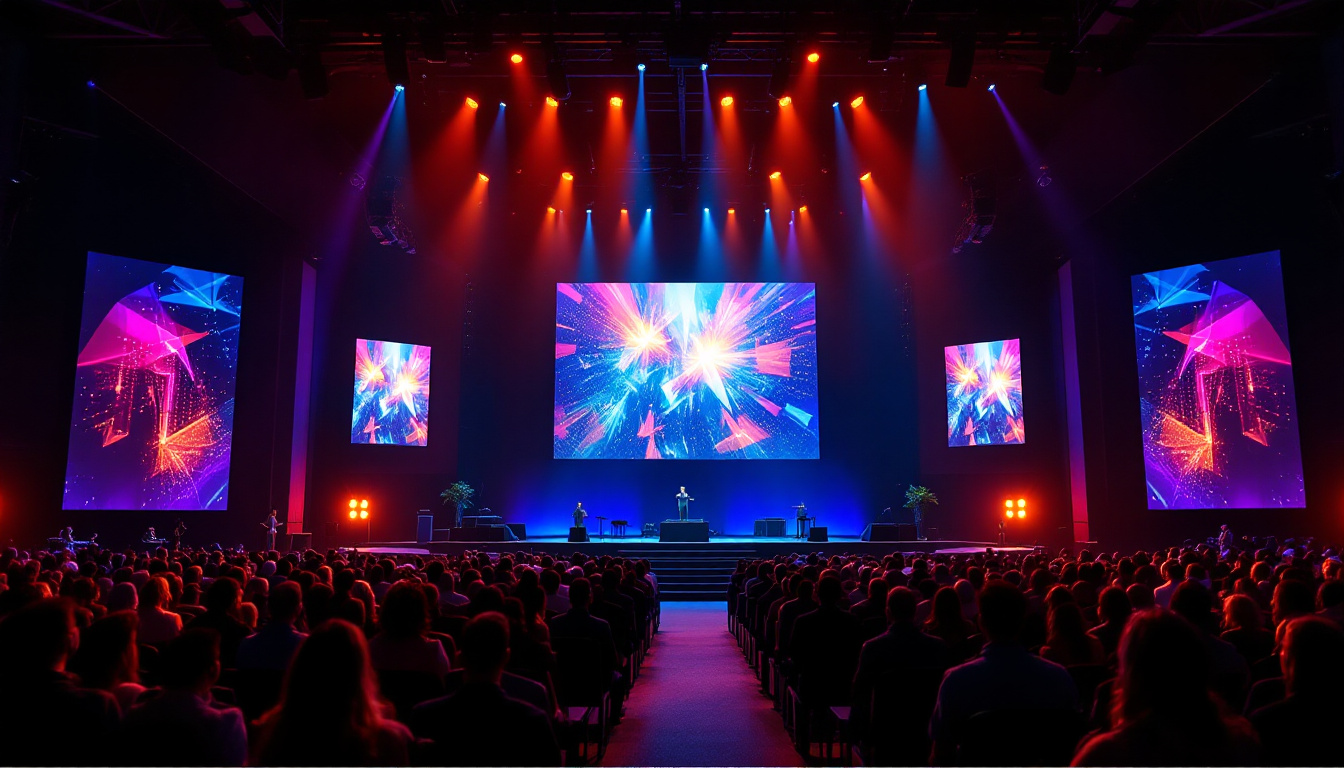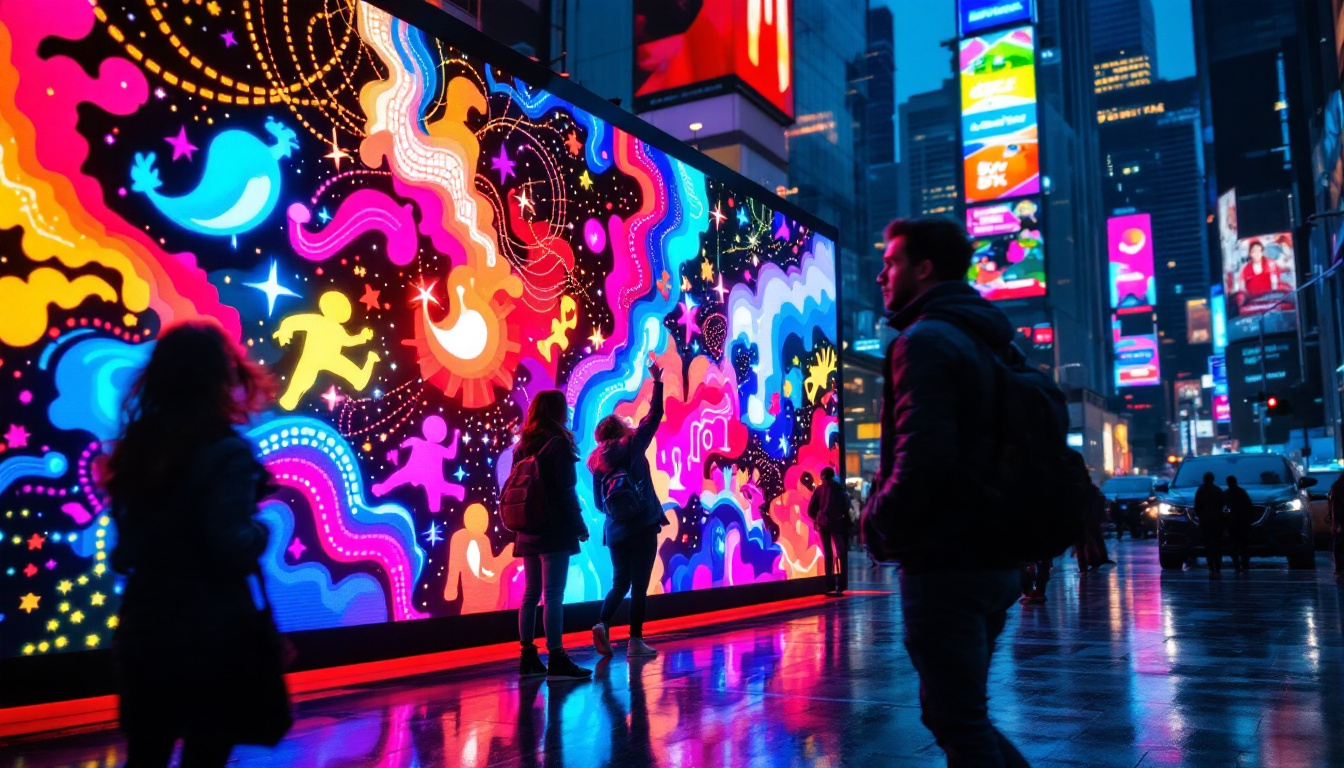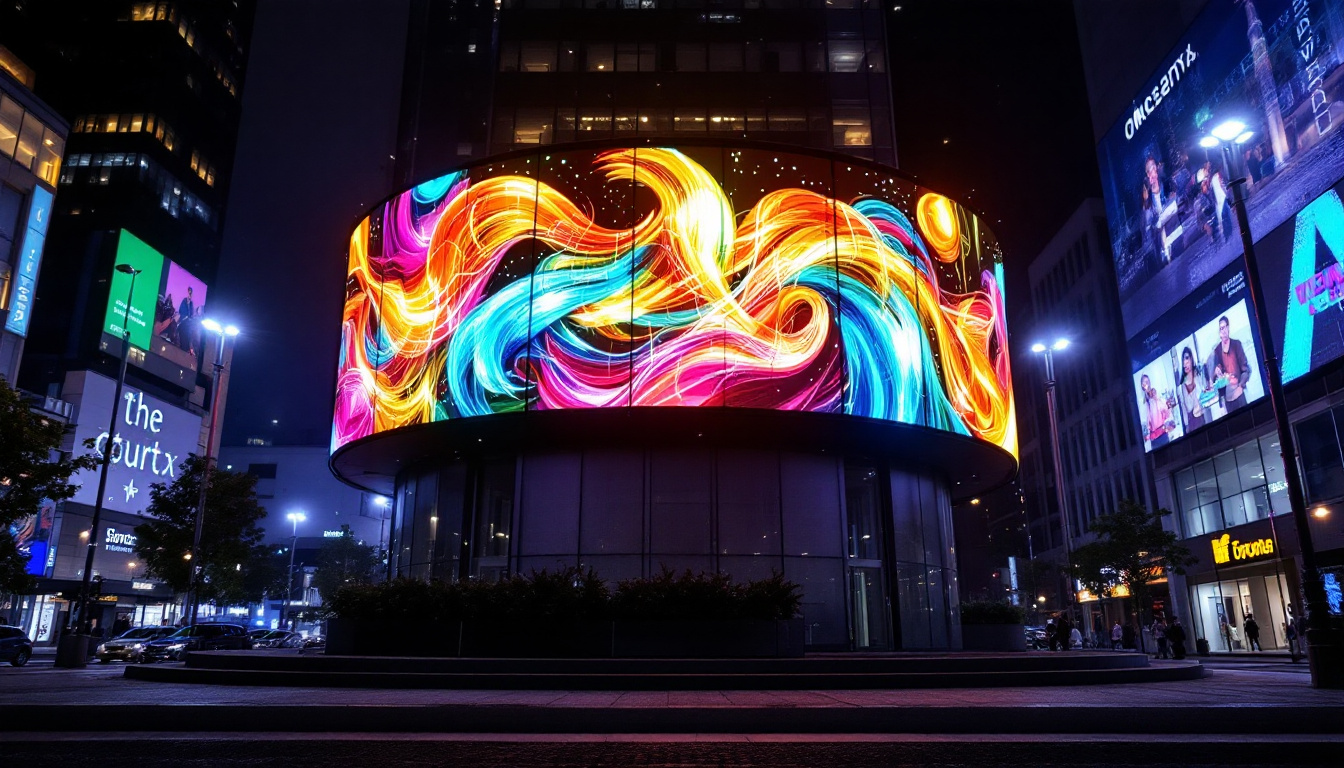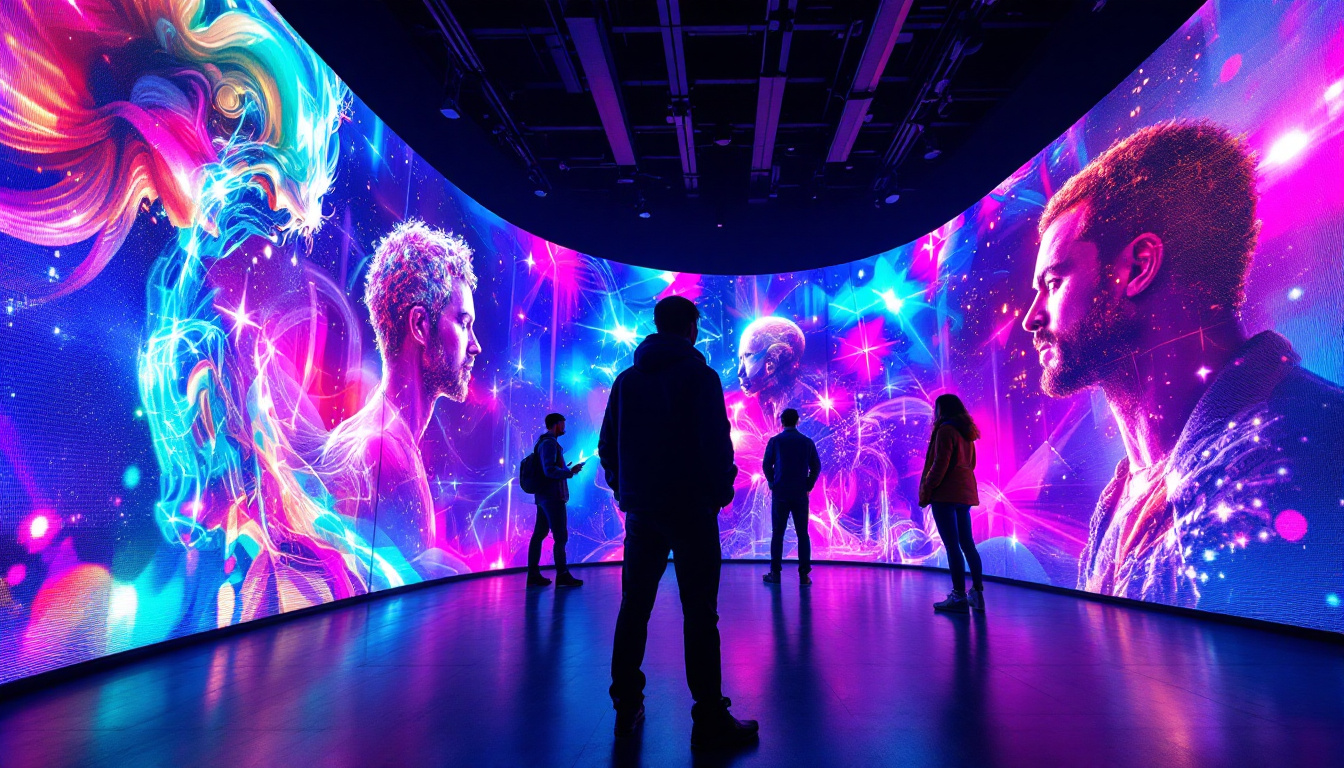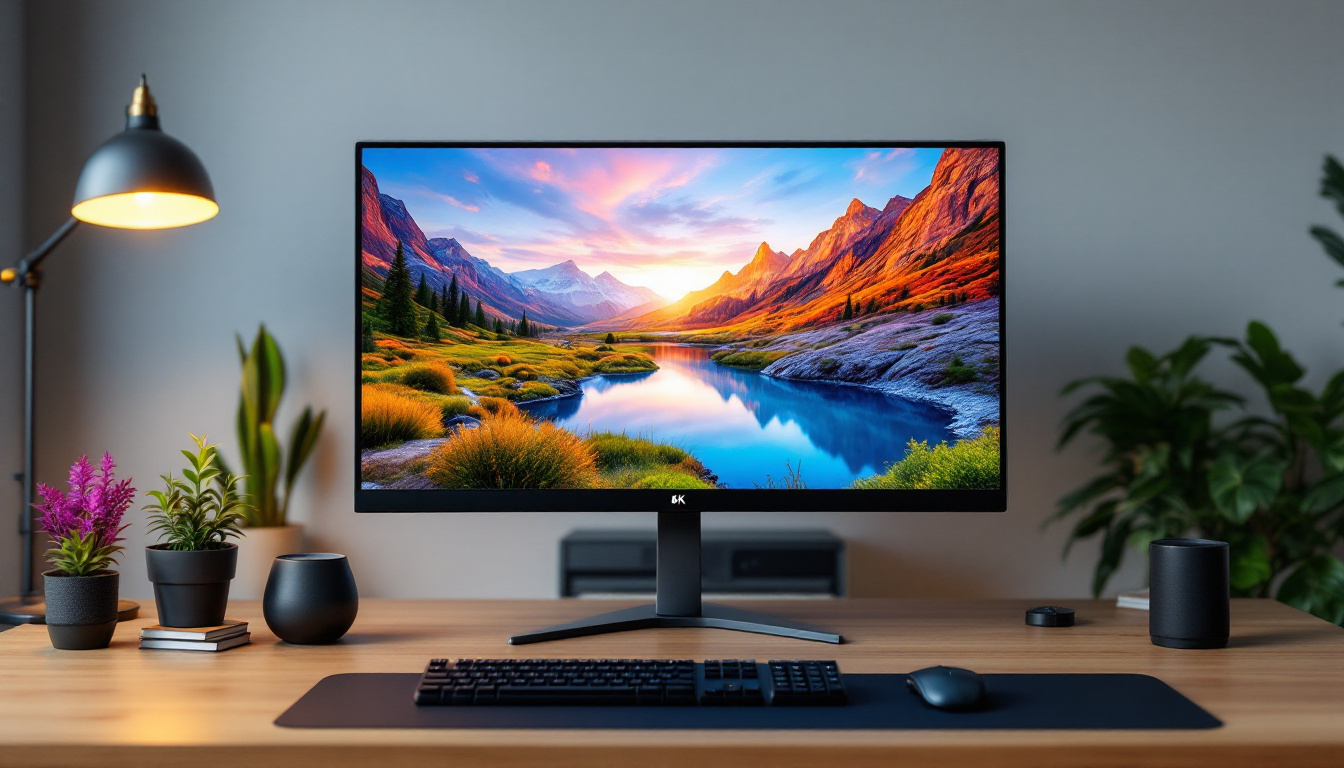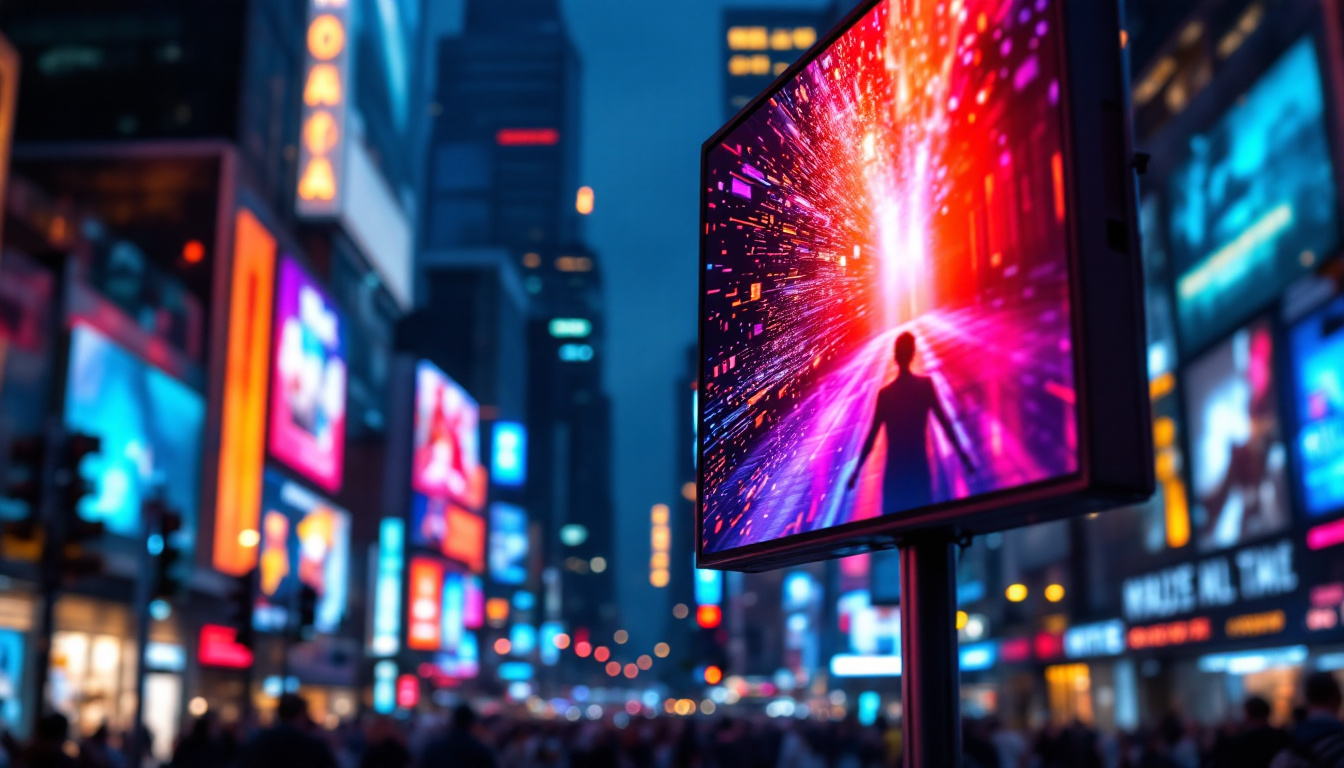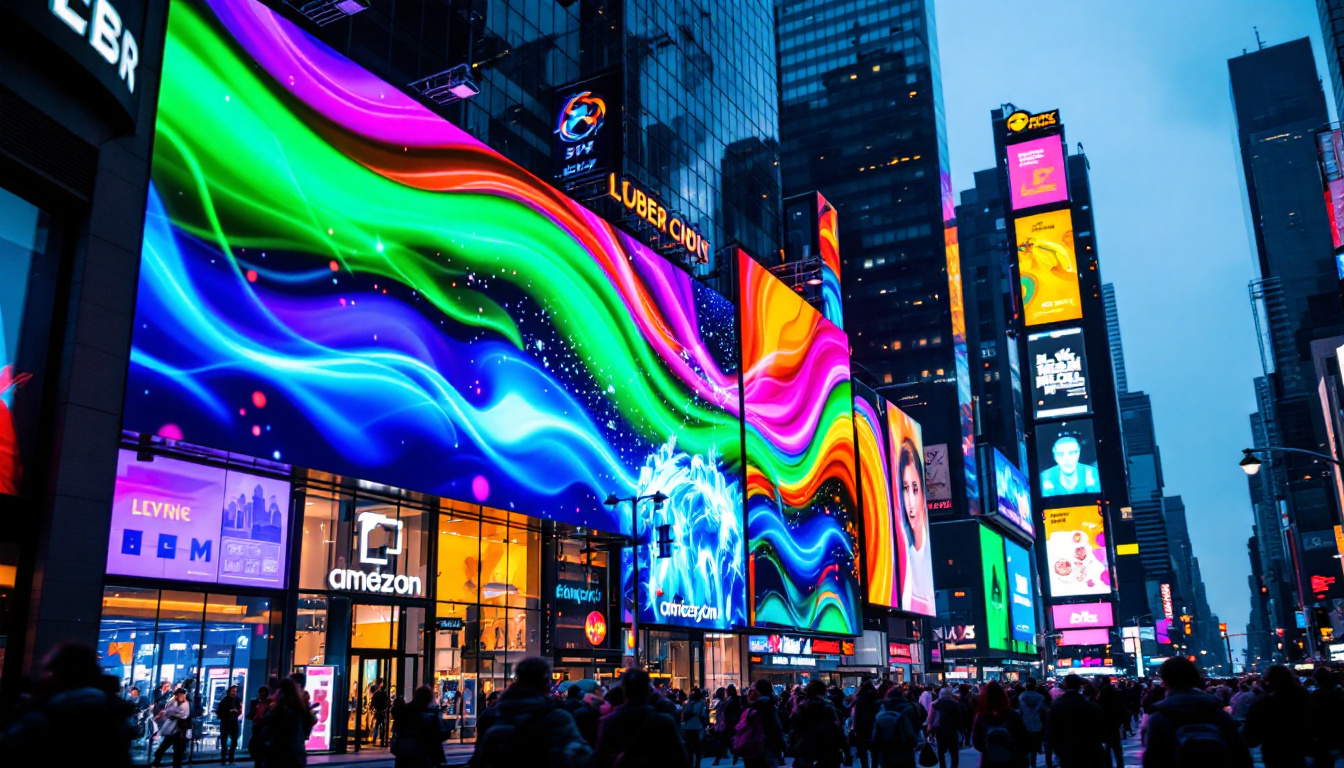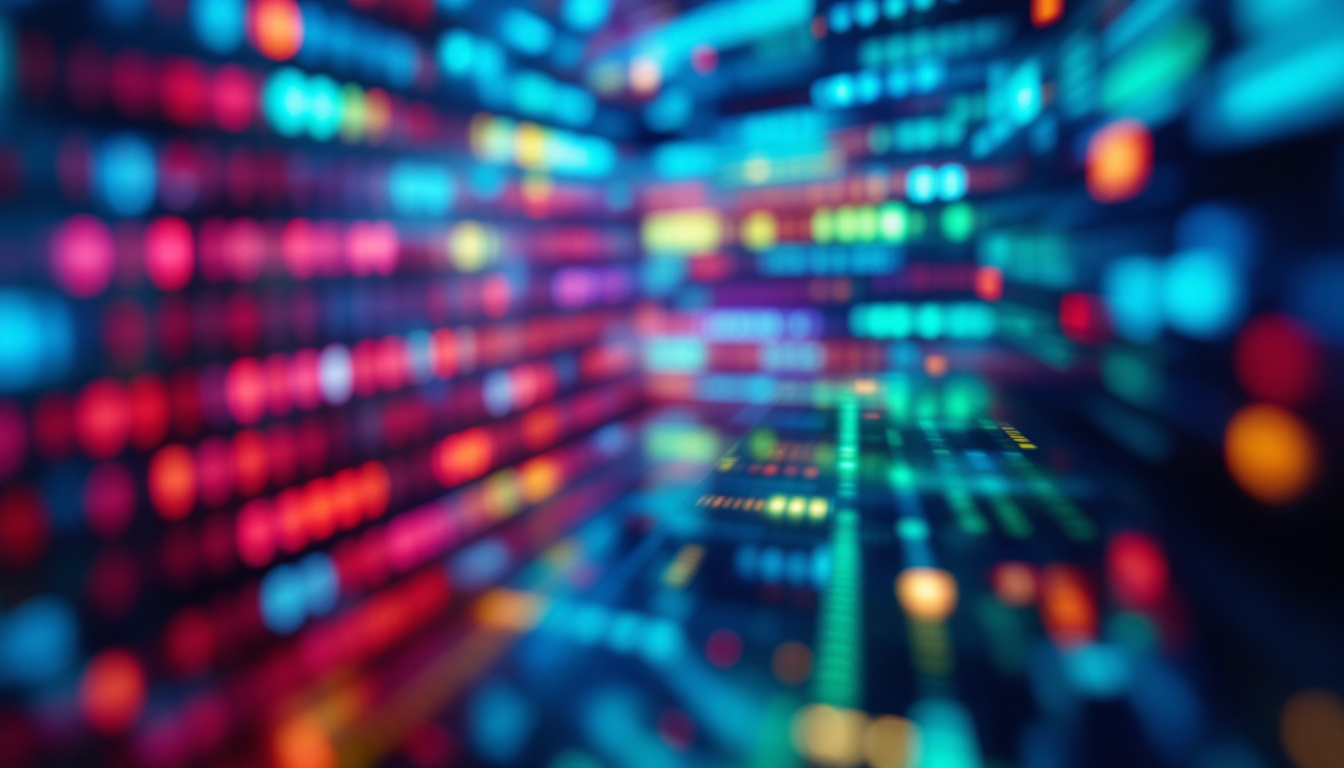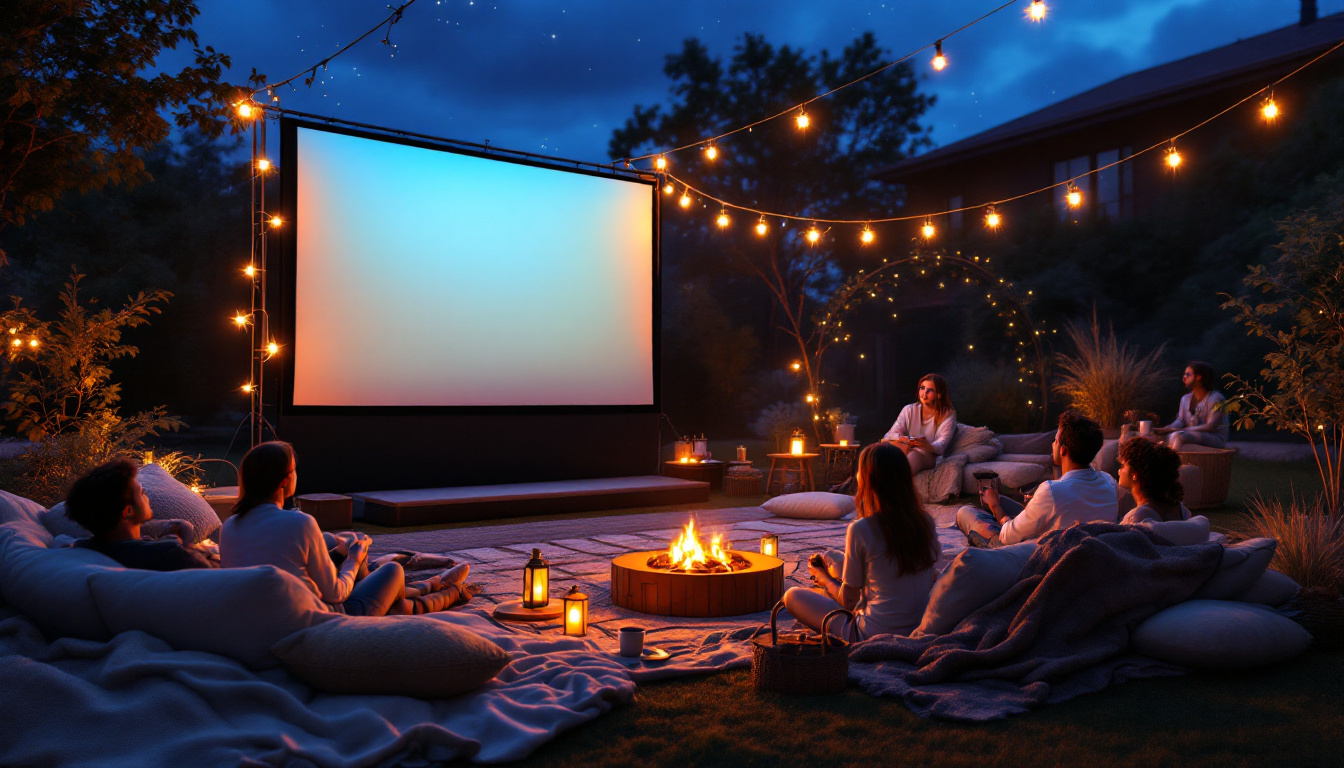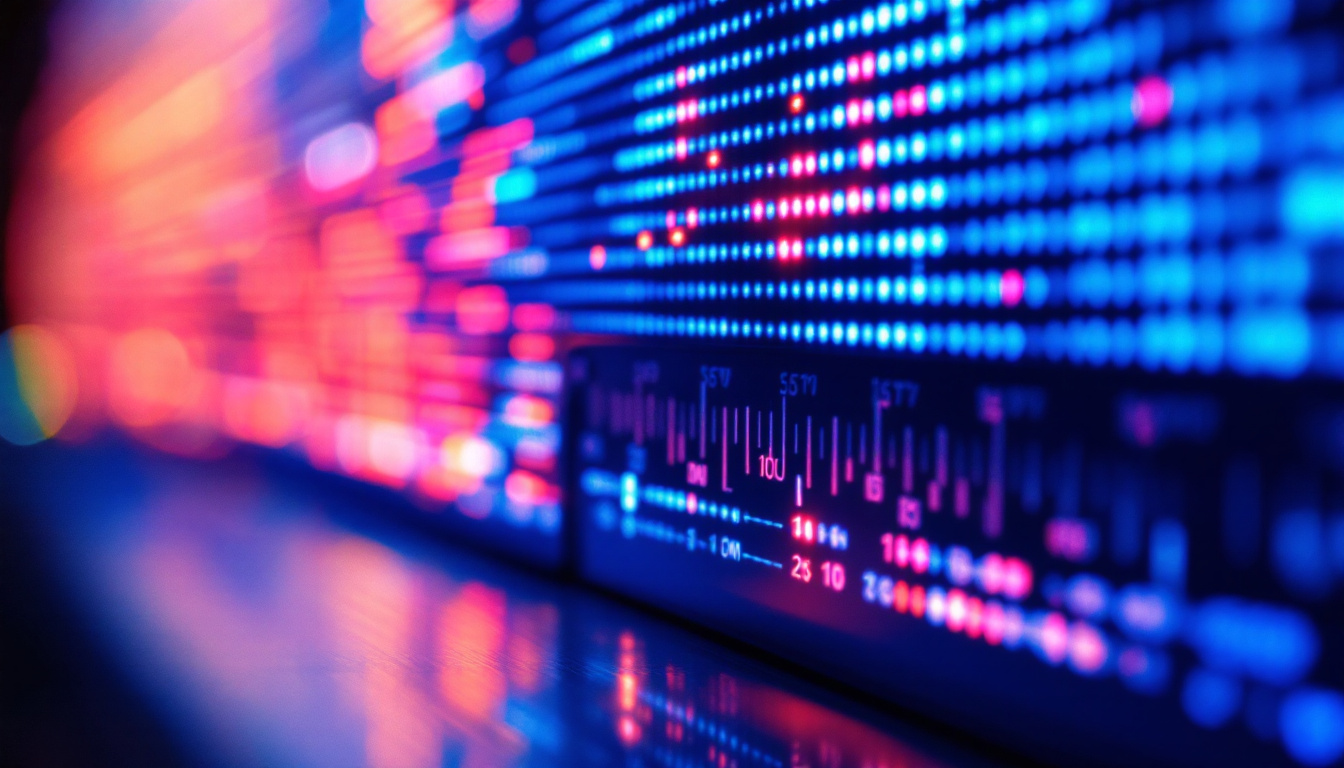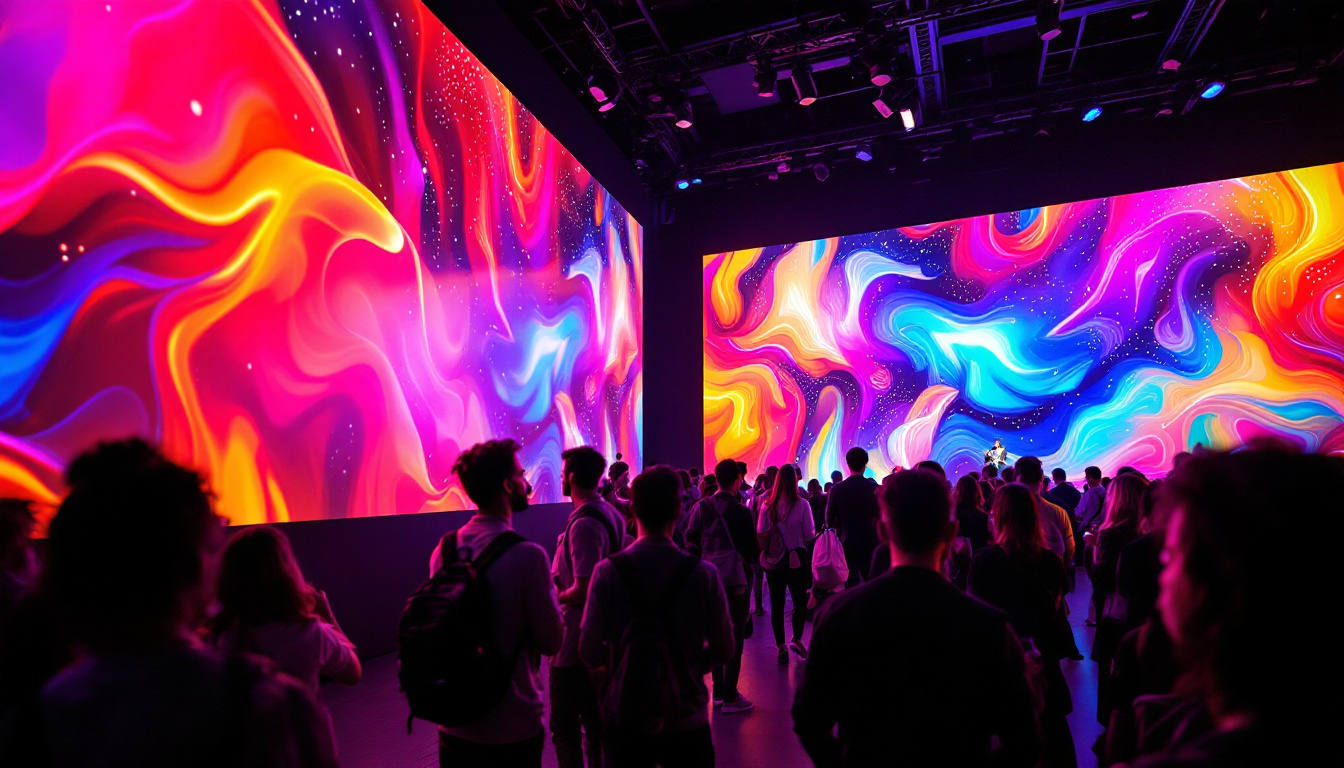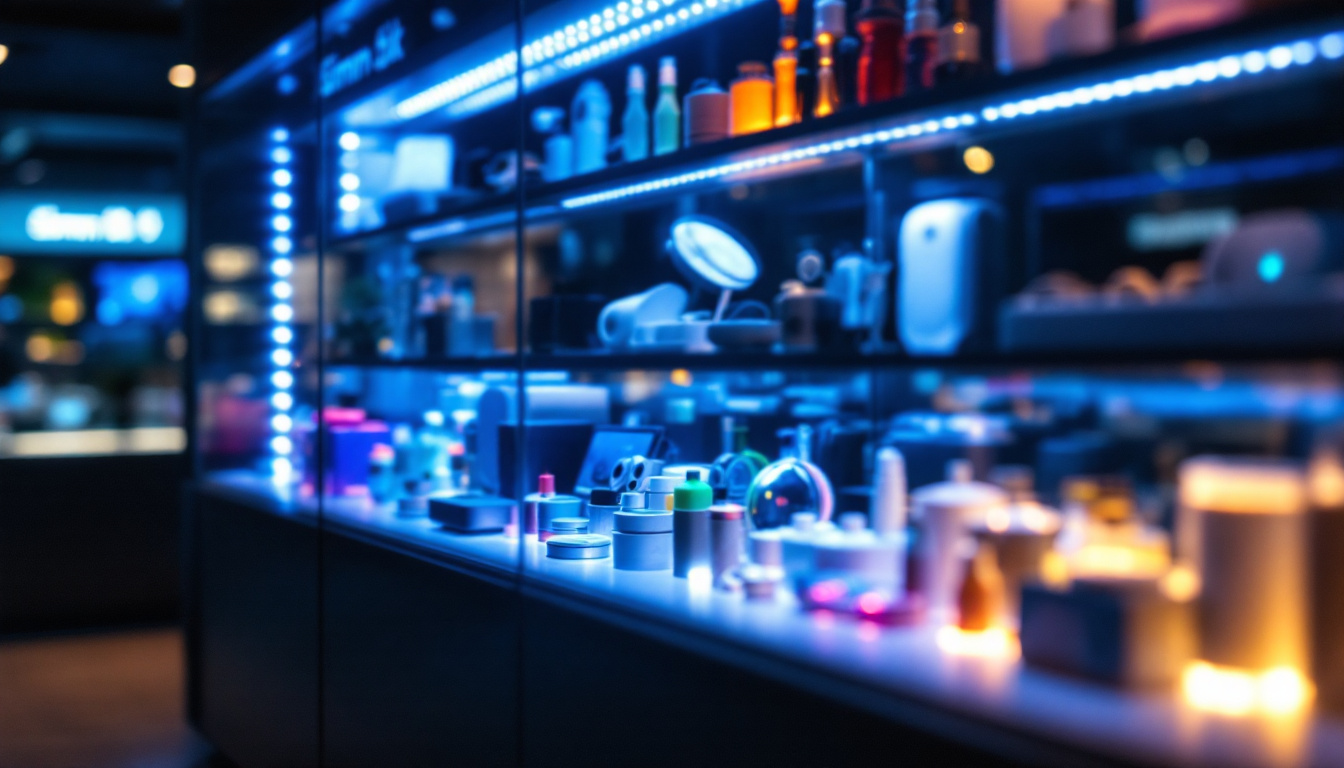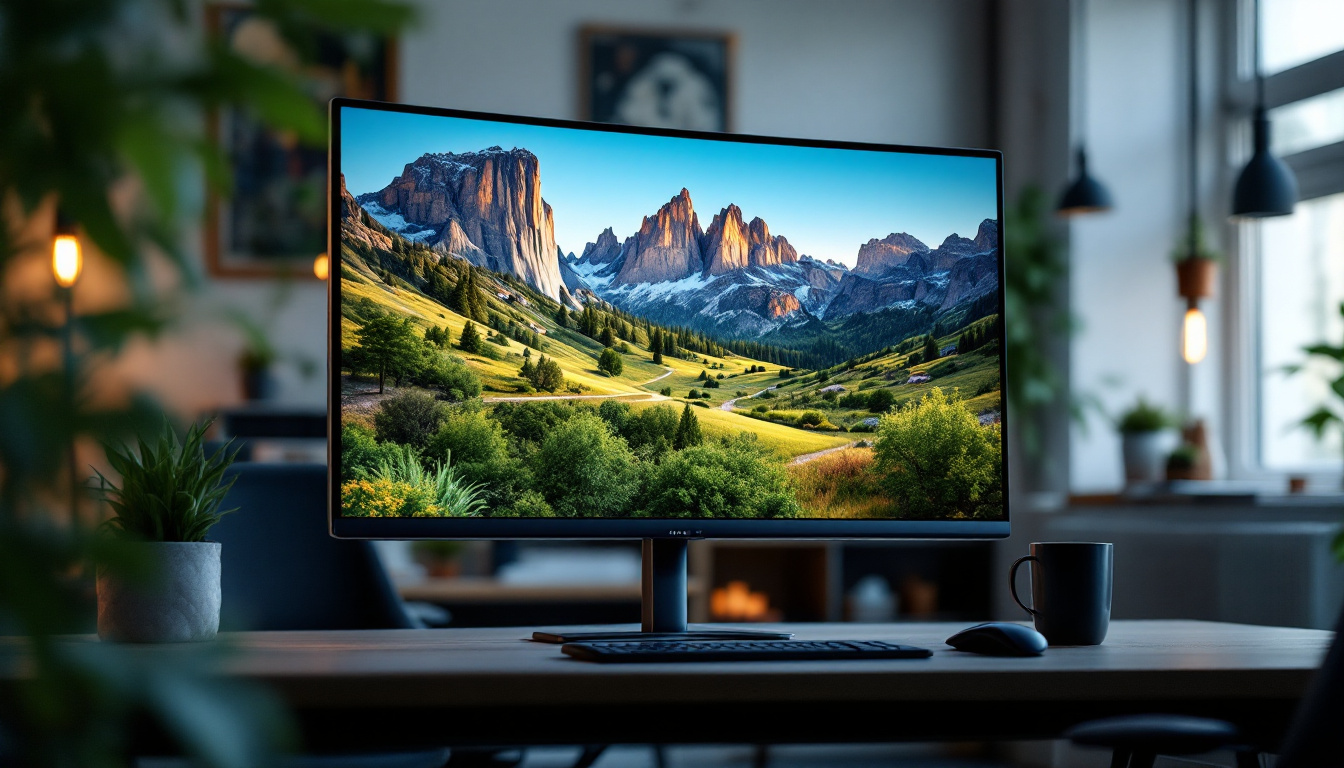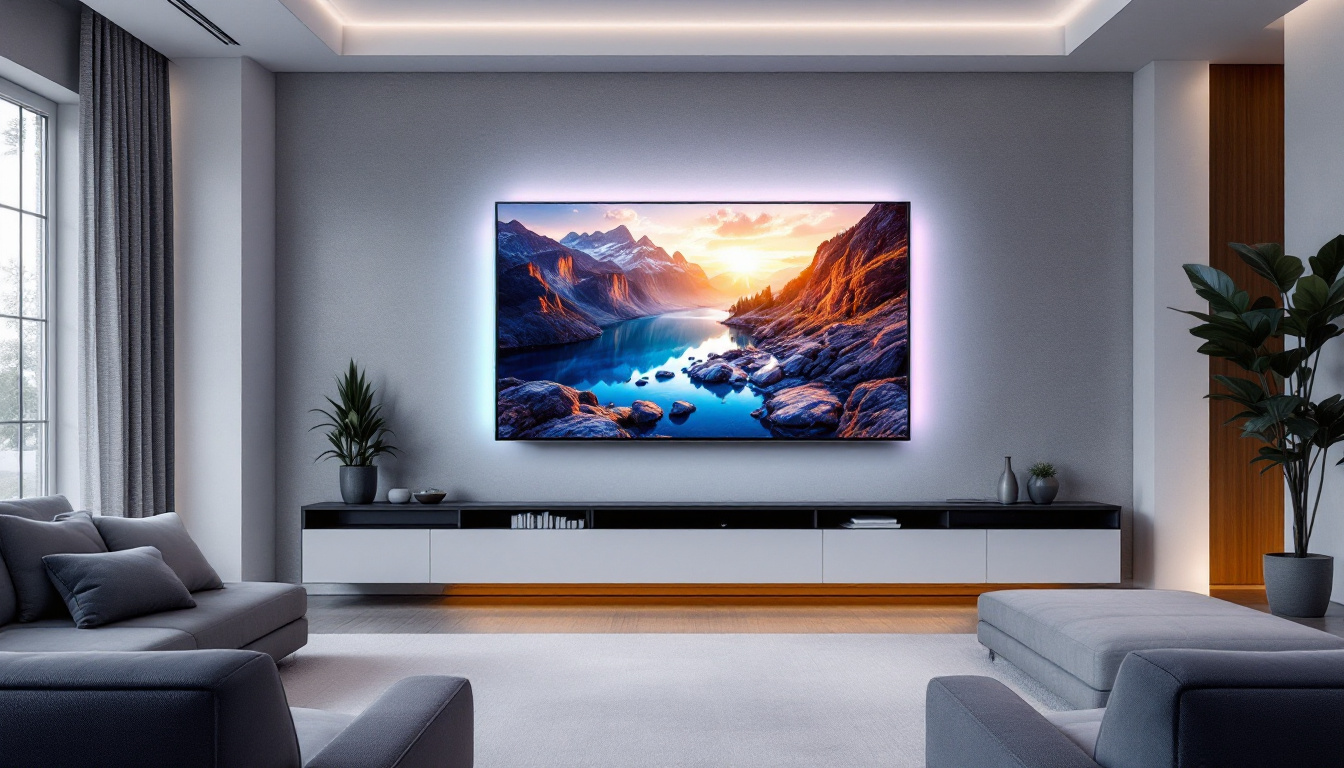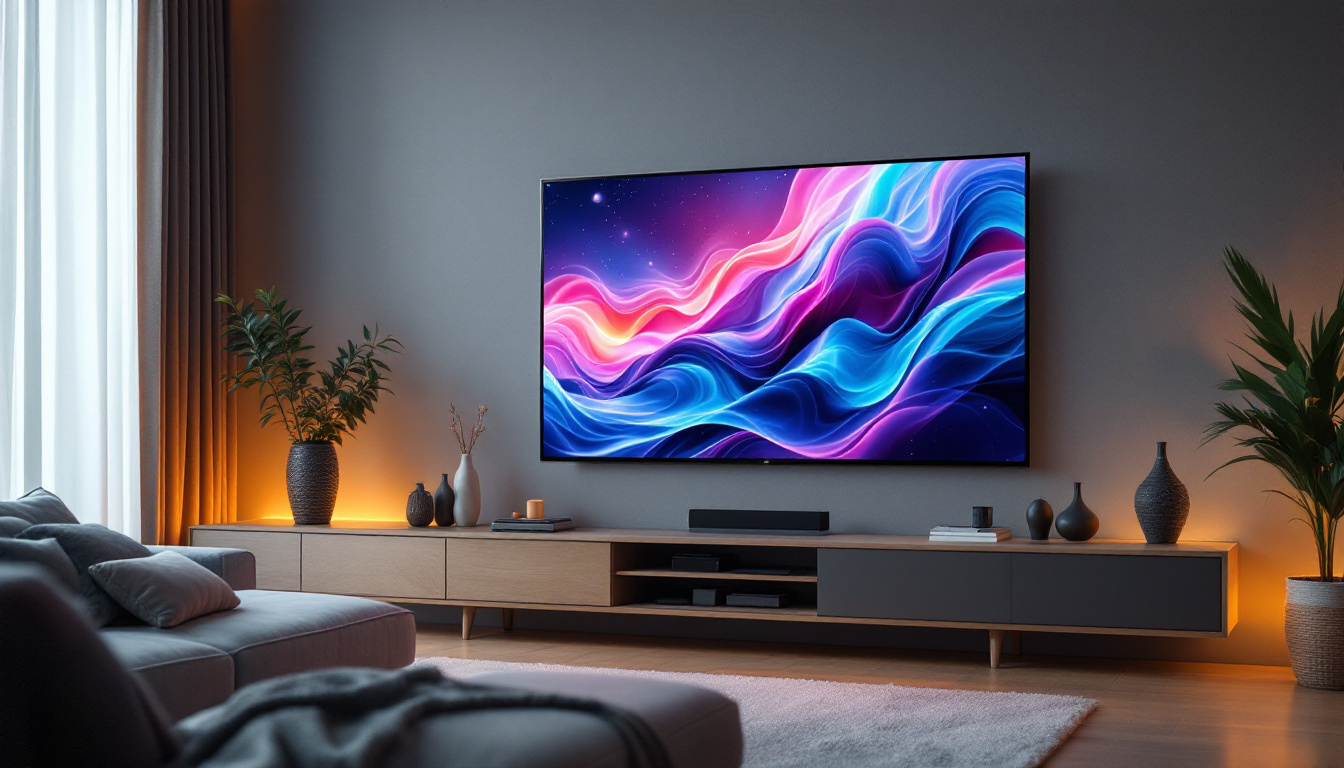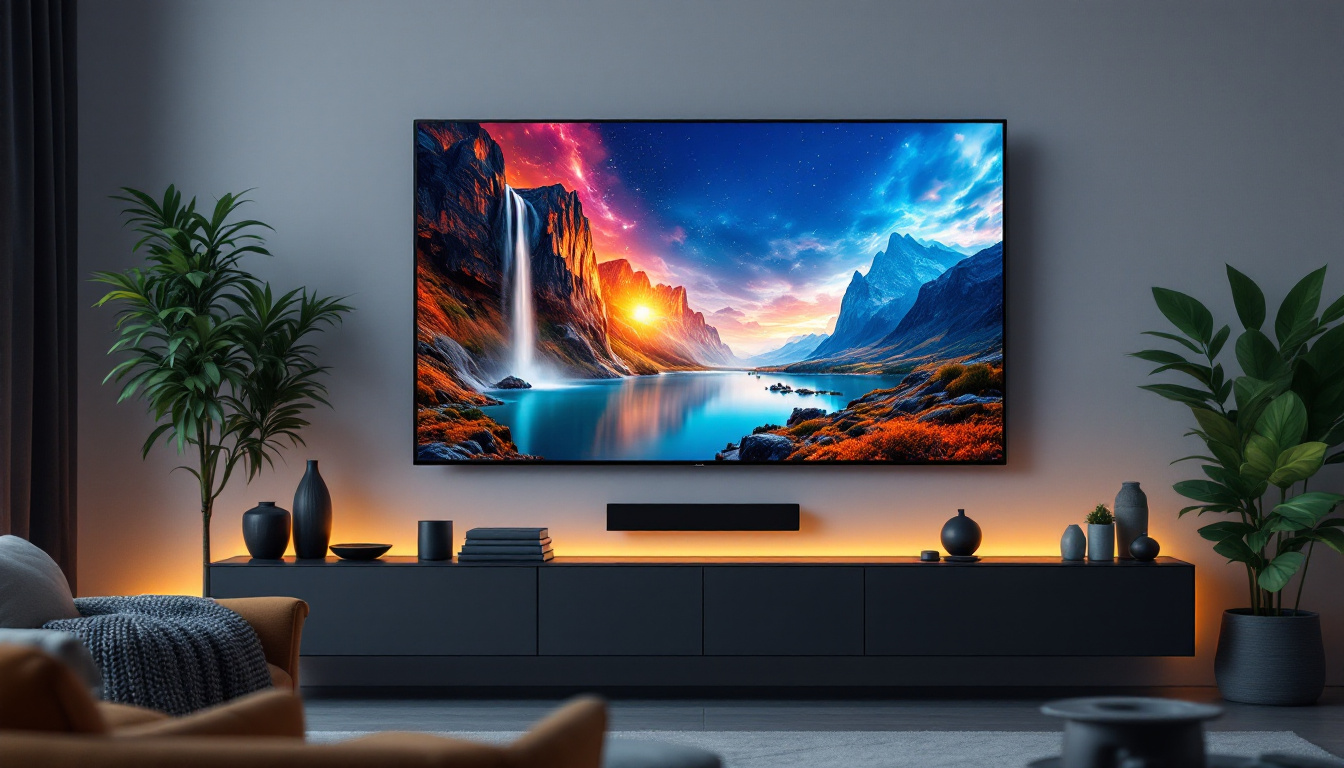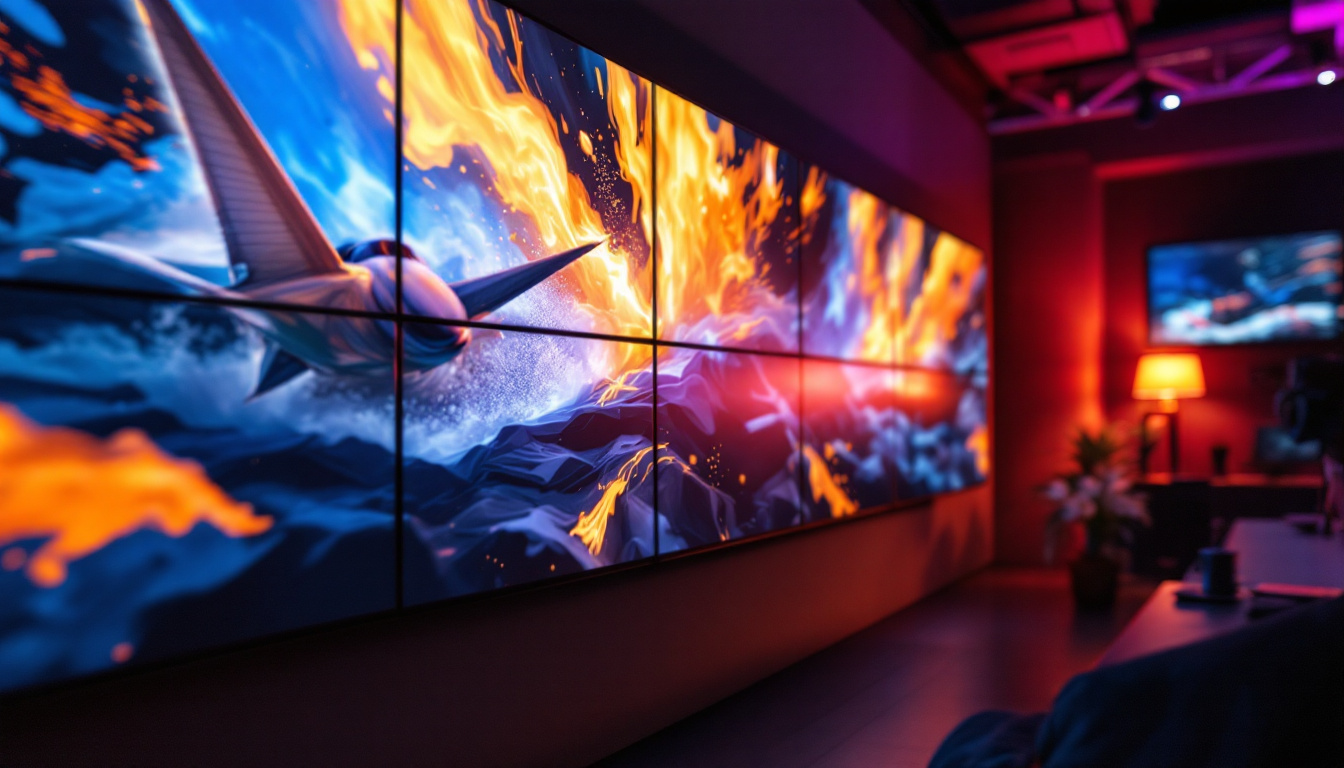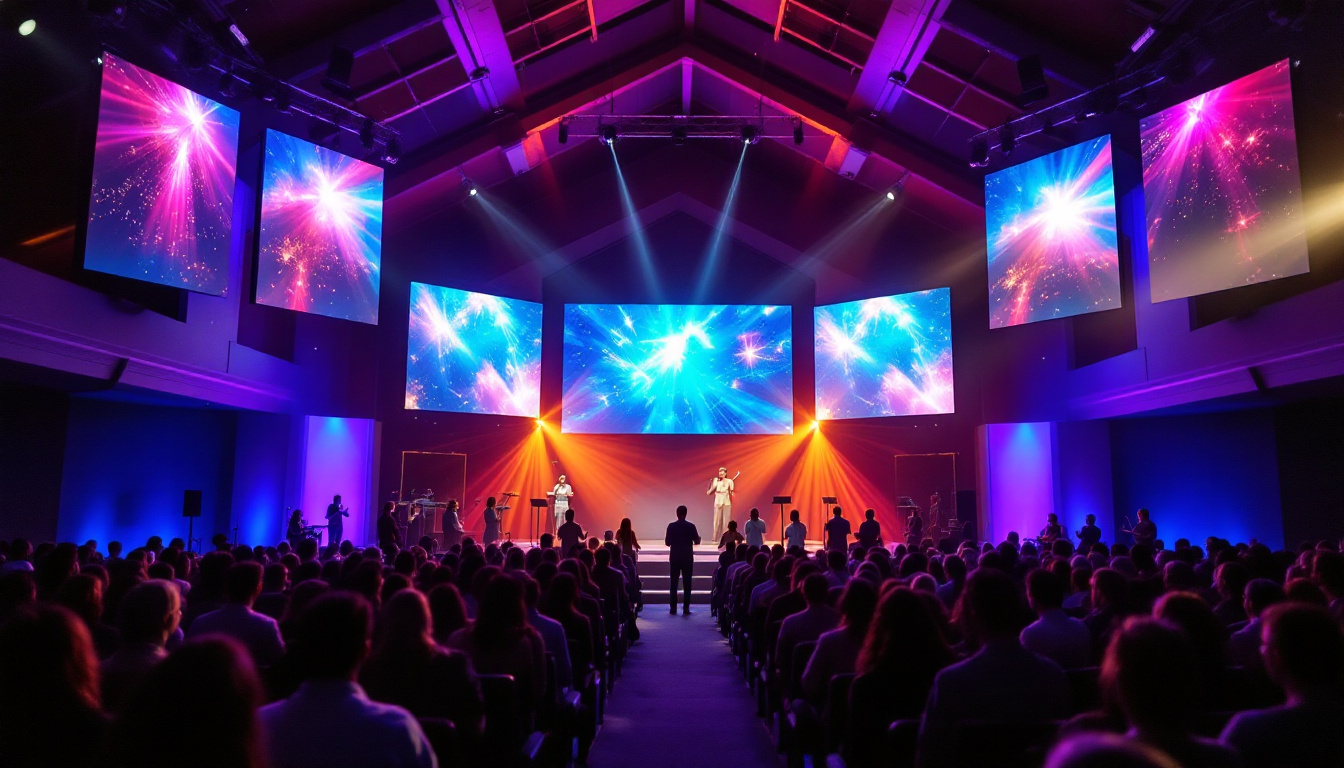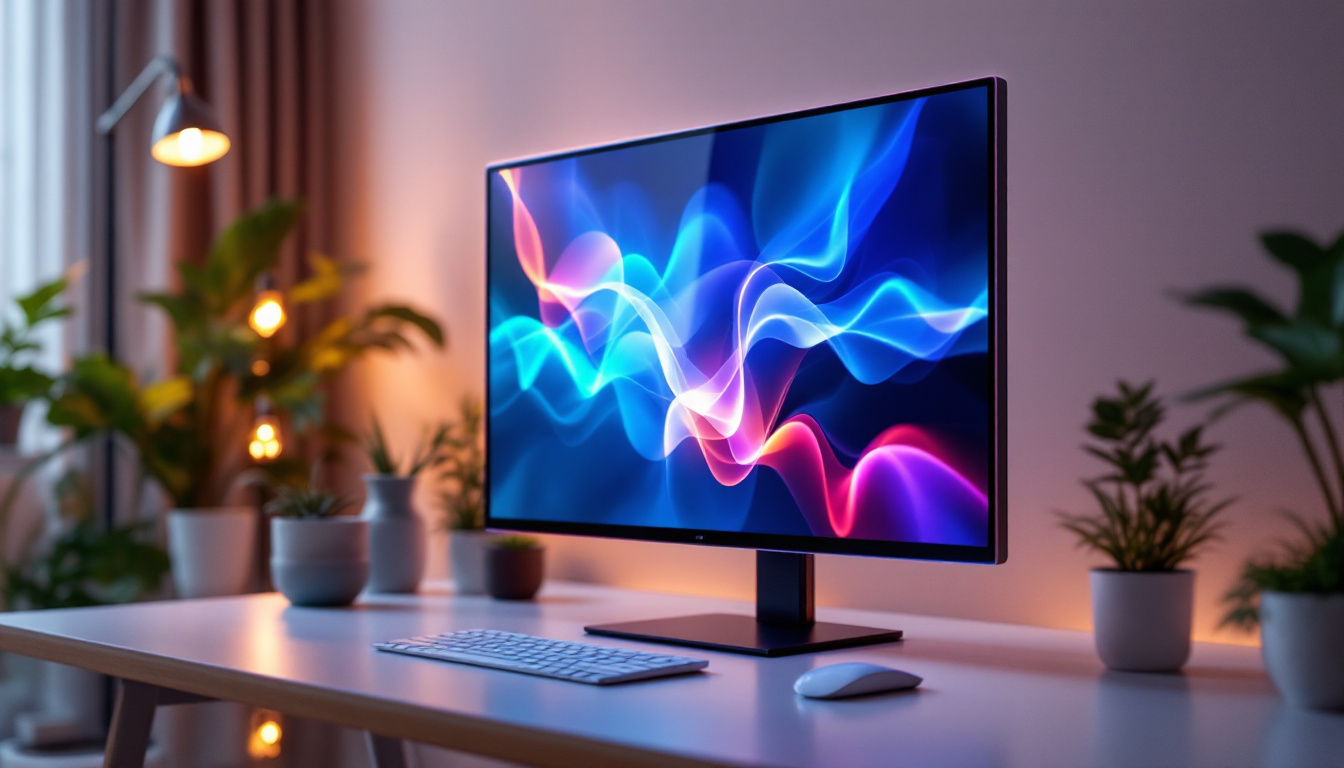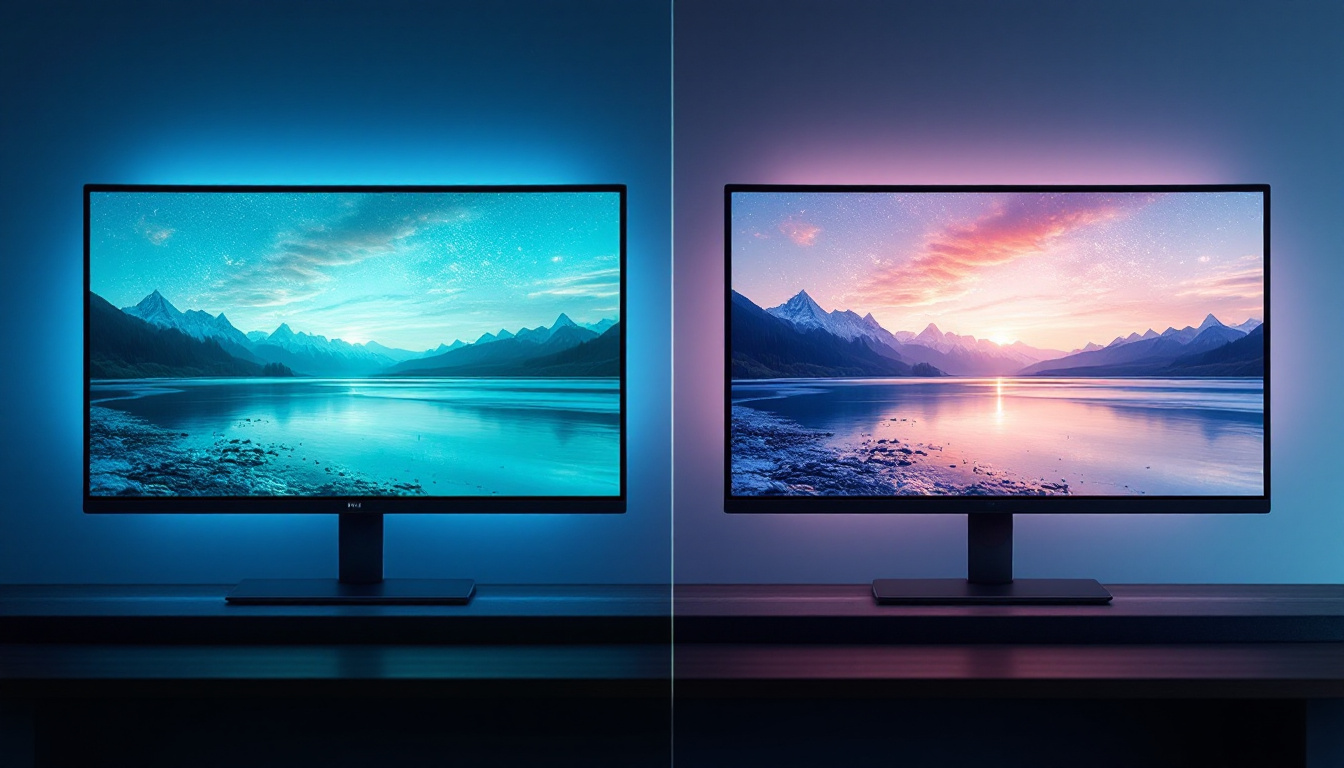The integration of technology into architectural design has revolutionized the way spaces are utilized and experienced. Among the most captivating innovations in this realm is the use of curved interior walls equipped with LED displays. This combination not only enhances aesthetic appeal but also transforms the functionality of interior spaces. This article delves into the intricacies of curved interior walls with LED displays, exploring their design, applications, and the technology that makes it all possible.
The Concept of Curved Interior Walls
Curved interior walls represent a significant departure from traditional straight-line designs. These walls can create a sense of fluidity and movement within a space, breaking the monotony often associated with conventional architecture. The concept is rooted in the idea that environments can influence emotions and behaviors, making the design of interior spaces a crucial element in various settings, from commercial to residential.
Benefits of Curved Walls
One of the primary benefits of curved walls is their ability to enhance spatial dynamics. Unlike straight walls, which can create a boxy feel, curved walls can make a space feel larger and more inviting. They can also guide the flow of movement, directing foot traffic in a more natural manner. Furthermore, curved walls can be aesthetically pleasing, allowing for unique design elements that can serve as focal points in a room.
Additionally, the use of curved walls can facilitate better acoustics. The shape of the wall can help to disperse sound waves more evenly throughout a space, reducing echoes and improving overall sound quality. This feature is particularly beneficial in venues such as theaters, concert halls, and conference rooms, where audio clarity is paramount. In residential settings, curved walls can also create intimate conversation areas, enhancing the overall experience of gatherings and social interactions.
Design Flexibility
Curved walls offer architects and designers a unique canvas to work with. The flexibility in design allows for creativity that is often constrained by traditional straight walls. Designers can experiment with various materials, colors, and textures, creating a more engaging and immersive environment. This flexibility also extends to the integration of technology, such as LED displays, which can be seamlessly incorporated into the curvature of the walls. The use of innovative materials, such as translucent panels or textured surfaces, can further amplify the visual appeal and functionality of curved walls.
Moreover, curved walls can be tailored to fit specific themes or branding requirements, making them ideal for commercial spaces. For instance, a retail store could use a curved wall to create an inviting entrance, while also incorporating LED displays to showcase products or promotions. In hospitality design, curved walls can be used to create cozy nooks in restaurants or lounges, enhancing the guest experience by providing a sense of privacy while still maintaining an open atmosphere. This adaptability not only helps in creating unique visual narratives but also plays a crucial role in establishing a brand’s identity through thoughtful spatial design.
Understanding LED Displays
LED (Light Emitting Diode) displays have become increasingly popular in various applications due to their brightness, energy efficiency, and versatility. When integrated with curved walls, LED displays can create stunning visual experiences that captivate audiences and enhance the overall design of a space.
How LED Displays Work
LED displays consist of numerous tiny light-emitting diodes that work together to produce images and videos. These diodes can emit different colors based on the electrical current passing through them, allowing for vibrant and dynamic visuals. The technology behind LED displays has advanced significantly, resulting in higher resolutions and better color accuracy.
One of the key advantages of LED displays is their ability to be customized in size and shape. This adaptability makes them particularly suitable for curved walls, where traditional display technologies may struggle to conform to non-linear surfaces. The flexibility of LED displays allows for seamless integration into the architectural design, creating a harmonious blend of form and function.
Types of LED Displays
There are several types of LED displays that can be utilized in conjunction with curved walls. These include indoor and outdoor displays, as well as flexible LED panels that can be shaped to fit specific contours. Indoor LED displays are often used in commercial settings, such as retail spaces and corporate environments, where high-quality visuals are essential for engaging customers and clients.
Outdoor LED displays, on the other hand, are designed to withstand various weather conditions and are commonly used for advertising and public information. Flexible LED panels are particularly noteworthy, as they can be bent and shaped to fit the curvature of walls, making them ideal for innovative architectural designs.
Applications of Curved Interior Walls with LED Displays
The combination of curved interior walls and LED displays has found applications across various sectors, each leveraging the unique benefits of this design approach. From retail environments to entertainment venues, the possibilities are vast.
Retail Environments
In retail spaces, curved walls equipped with LED displays can create immersive shopping experiences. Brands can utilize these displays to showcase products, highlight promotions, or tell a story that resonates with customers. The dynamic visuals can draw customers in, making them more likely to engage with the products on offer.
Additionally, the use of curved walls can enhance the overall aesthetic of the store, creating a more inviting atmosphere. This design approach not only attracts customers but also encourages them to spend more time in the space, ultimately leading to increased sales.
Corporate Spaces
In corporate environments, curved interior walls with LED displays can serve multiple purposes. They can be used for presentations, showcasing company values, or displaying real-time data. This technology can facilitate communication and collaboration among employees, making it easier to share information and ideas.
Moreover, the visually appealing nature of curved walls can contribute to a positive work environment, boosting employee morale and productivity. By creating a space that is both functional and aesthetically pleasing, companies can foster a culture of innovation and creativity.
Entertainment Venues
Entertainment venues, such as theaters and concert halls, can greatly benefit from the integration of curved walls with LED displays. These spaces can utilize the technology to enhance performances, creating immersive experiences for audiences. For instance, dynamic visuals can be projected onto curved walls, complementing live performances and adding an extra layer of engagement.
Furthermore, the acoustic benefits of curved walls can significantly improve sound quality, ensuring that audiences enjoy an optimal experience. The combination of visual and auditory elements can elevate performances, making them more memorable and impactful.
Challenges and Considerations
While the integration of curved interior walls and LED displays offers numerous benefits, there are also challenges and considerations to keep in mind. Understanding these factors is crucial for successful implementation.
Design and Installation Challenges
Designing and installing curved walls with LED displays can be more complex than traditional straight walls. The curvature must be carefully calculated to ensure that the LED displays fit seamlessly and function correctly. This complexity can lead to increased costs and longer installation times.
Additionally, the structural integrity of the walls must be considered. Curved walls may require specialized materials and construction techniques to ensure they can support the weight of the LED displays and withstand environmental factors.
Maintenance and Upkeep
Maintaining curved walls with integrated LED displays can also present challenges. Regular maintenance is essential to keep the displays functioning optimally and to ensure the walls remain in good condition. This may involve specialized cleaning techniques and periodic inspections to address any potential issues.
Moreover, as technology continues to evolve, upgrading LED displays may be necessary to keep up with advancements. This can involve additional costs and logistical considerations, particularly if the displays are integrated into the wall structure.
The Future of Curved Interior Walls with LED Displays
The future of curved interior walls with LED displays looks promising, with ongoing advancements in technology and design. As architects and designers continue to explore innovative ways to integrate these elements, new possibilities will emerge.
Technological Advancements
As LED technology continues to evolve, the potential for more advanced displays will increase. Future LED displays may offer even higher resolutions, improved energy efficiency, and enhanced color accuracy. This will allow for even more stunning visuals that can transform spaces in unprecedented ways.
Additionally, the development of smart technology will likely play a significant role in the future of curved walls with LED displays. The integration of IoT (Internet of Things) capabilities could enable dynamic content that responds to environmental factors or user interactions, creating a more personalized experience.
Architectural Innovations
The architectural landscape is also poised for change, with a growing emphasis on sustainability and eco-friendly design. Curved walls with LED displays can contribute to these goals by utilizing energy-efficient technology and materials. As more architects embrace sustainable practices, the demand for innovative design solutions will continue to rise.
Furthermore, the trend towards experiential design will likely drive the adoption of curved walls with LED displays in various sectors. As businesses seek to create memorable experiences for their customers, the integration of technology and design will become increasingly important.
Conclusion
Curved interior walls with LED displays represent a fascinating intersection of architecture and technology. This innovative design approach not only enhances the aesthetic appeal of spaces but also transforms their functionality. As the demand for unique and engaging environments continues to grow, the integration of curved walls and LED displays will likely become a standard in various sectors.
While challenges exist in the design, installation, and maintenance of these elements, the benefits far outweigh the drawbacks. The future holds exciting possibilities for curved interior walls with LED displays, driven by technological advancements and a commitment to innovative design. As this trend continues to evolve, it will undoubtedly shape the way spaces are experienced and utilized in the years to come.
Explore LumenMatrix LED Display Solutions
Ready to elevate your space with the latest in LED display technology? Discover how LumenMatrix can transform your environment with our comprehensive range of LED display solutions. From the immersive Indoor LED Wall Display to the dynamic Outdoor LED Wall Display, and from the innovative LED Transparent Display to the versatile All-in-One LED Display, we have the cutting-edge technology to bring your vision to life. Experience the future of visual communication and create an impact with LumenMatrix. Check out LumenMatrix LED Display Solutions and start your journey towards a visually captivating space today.

